Kuniaki Uehara
ChartPointFlow for Topology-Aware 3D Point Cloud Generation
Dec 04, 2020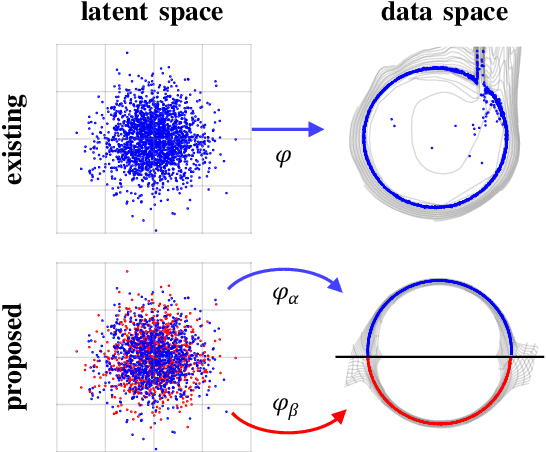
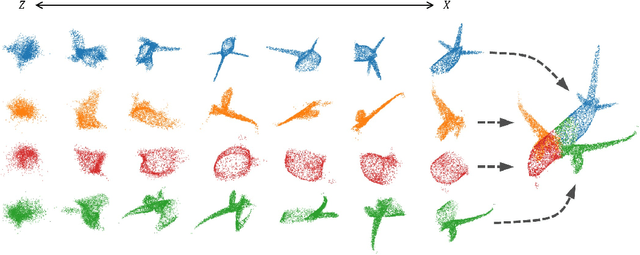
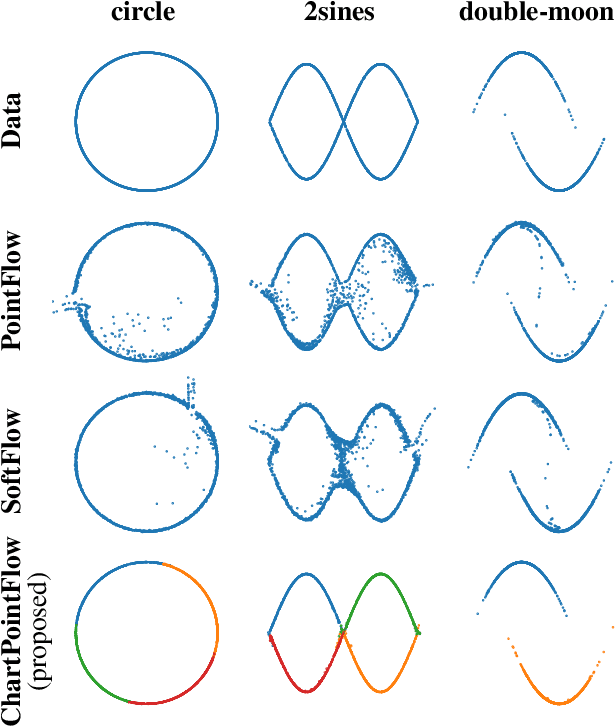
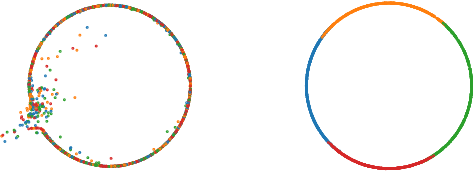
Abstract:A point cloud serves as a representation of the surface of a three-dimensional shape. Deep generative models have been adapted to model their variations typically by a map from a ball-like set of latent variables. However, previous approaches have not paid much attention to the topological structure of a point cloud; a continuous map cannot express the varying number of holes and intersections. Moreover, a point cloud is often composed of multiple subparts, and it is also hardly expressed. In this paper, we propose ChartPointFlow, which is a flow-based generative model with multiple latent labels. By maximizing the mutual information, a map conditioned by a label is assigned to a continuous subset of a given point cloud, like a chart of a manifold. This enables our proposed model to preserve the topological structure with clear boundaries, while previous approaches tend to suffer from blurs and to fail in generating holes. Experimental results demonstrate that ChartPointFlow achieves the state-of-the-art performance in generation and reconstruction among sampling-based point cloud generators.
Exploring Uncertainty Measures for Image-Caption Embedding-and-Retrieval Task
Apr 09, 2019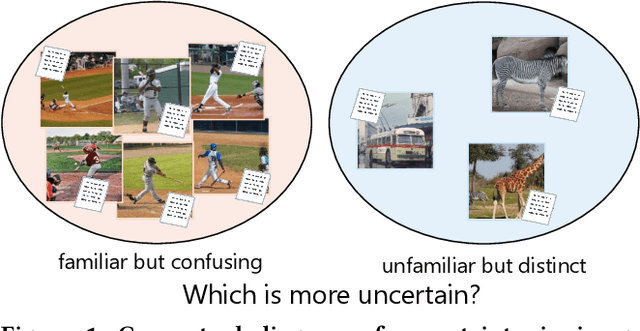
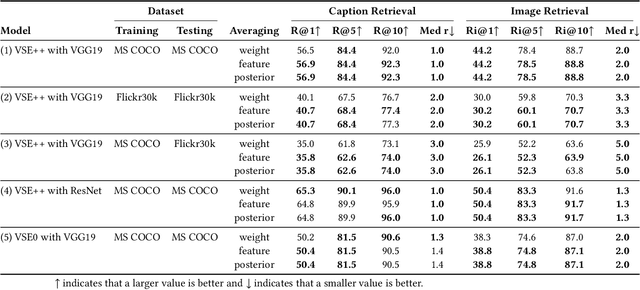

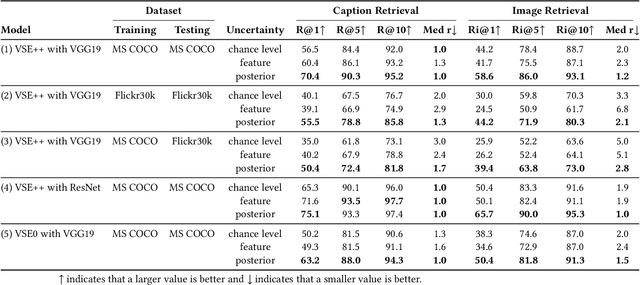
Abstract:With the wide development of black-box machine learning algorithms, particularly deep neural network (DNN), the practical demand for the reliability assessment is rapidly rising. On the basis of the concept that `Bayesian deep learning knows what it does not know,' the uncertainty of DNN outputs has been investigated as a reliability measure for the classification and regression tasks. However, in the image-caption retrieval task, well-known samples are not always easy-to-retrieve samples. This study investigates two aspects of image-caption embedding-and-retrieval systems. On one hand, we quantify feature uncertainty by considering image-caption embedding as a regression task, and use it for model averaging, which can improve the retrieval performance. On the other hand, we further quantify posterior uncertainty by considering the retrieval as a classification task, and use it as a reliability measure, which can greatly improve the retrieval performance by rejecting uncertain queries. The consistent performance of two uncertainty measures is observed with different datasets (MS COCO and Flickr30k), different deep learning architectures (dropout and batch normalization), and different similarity functions.
Data Augmentation using Random Image Cropping and Patching for Deep CNNs
Nov 22, 2018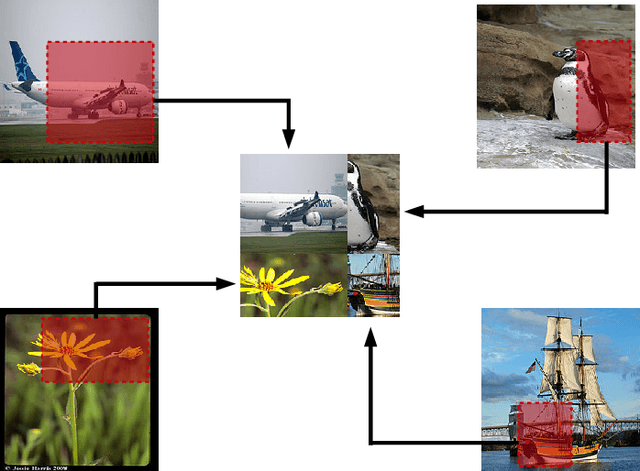
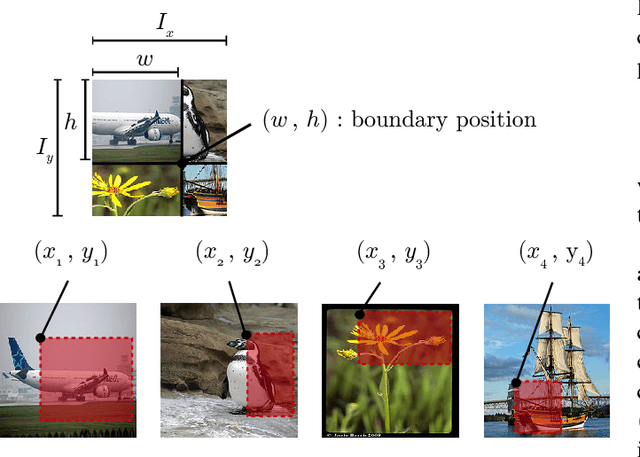
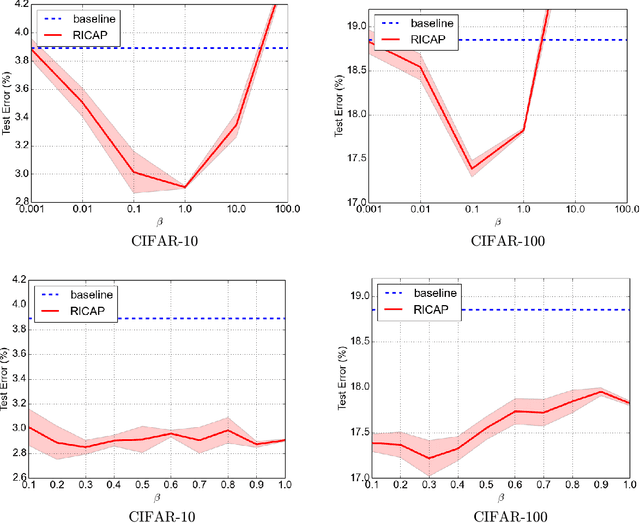

Abstract:Deep convolutional neural networks (CNNs) have achieved remarkable results in image processing tasks. However, their high expression ability risks overfitting. Consequently, data augmentation techniques have been proposed to prevent overfitting while enriching datasets. Recent CNN architectures with more parameters are rendering traditional data augmentation techniques insufficient. In this study, we propose a new data augmentation technique called random image cropping and patching (RICAP) which randomly crops four images and patches them to create a new training image. Moreover, RICAP mixes the class labels of the four images, resulting in an advantage similar to label smoothing. We evaluated RICAP with current state-of-the-art CNNs (e.g., the shake-shake regularization model) by comparison with competitive data augmentation techniques such as cutout and mixup. RICAP achieves a new state-of-the-art test error of $2.19\%$ on CIFAR-10. We also confirmed that deep CNNs with RICAP achieve better results on classification tasks using CIFAR-100 and ImageNet and an image-caption retrieval task using Microsoft COCO.
Deep Generative Model using Unregularized Score for Anomaly Detection with Heterogeneous Complexity
Sep 04, 2018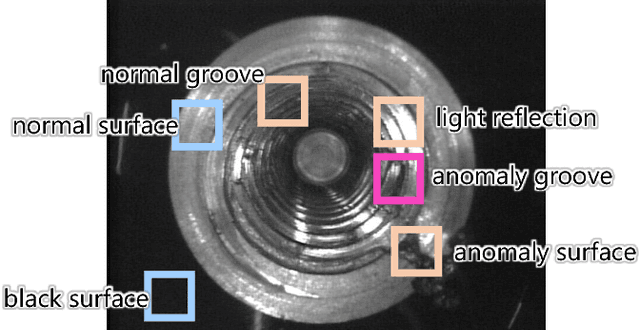
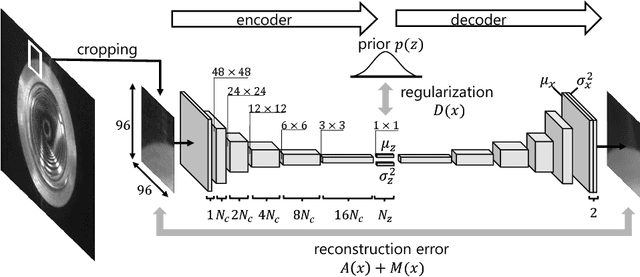
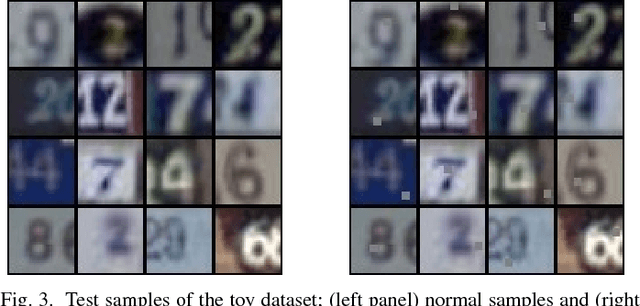
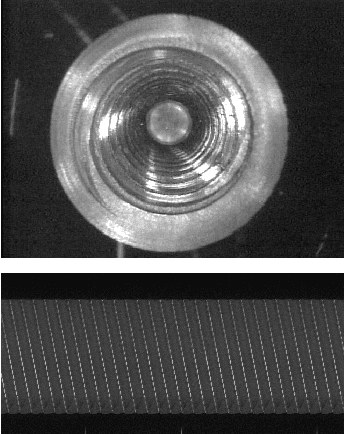
Abstract:Accurate and automated detection of anomalous samples in a natural image dataset can be accomplished with a probabilistic model for end-to-end modeling of images. Such images have heterogeneous complexity, however, and a probabilistic model overlooks simply shaped objects with small anomalies. This is because the probabilistic model assigns undesirably lower likelihoods to complexly shaped objects that are nevertheless consistent with set standards. To overcome this difficulty, we propose an unregularized score for deep generative models (DGMs), which are generative models leveraging deep neural networks. We found that the regularization terms of the DGMs considerably influence the anomaly score depending on the complexity of the samples. By removing these terms, we obtain an unregularized score, which we evaluated on a toy dataset and real-world manufacturing datasets. Empirical results demonstrate that the unregularized score is robust to the inherent complexity of samples and can be used to better detect anomalies.
Deep Neural Generative Model of Functional MRI Images for Psychiatric Disorder Diagnosis
Dec 18, 2017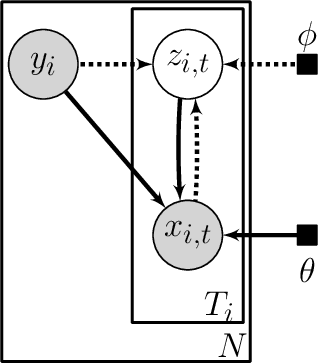
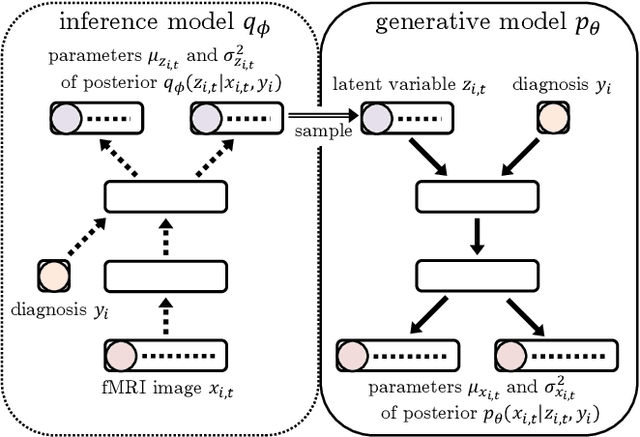
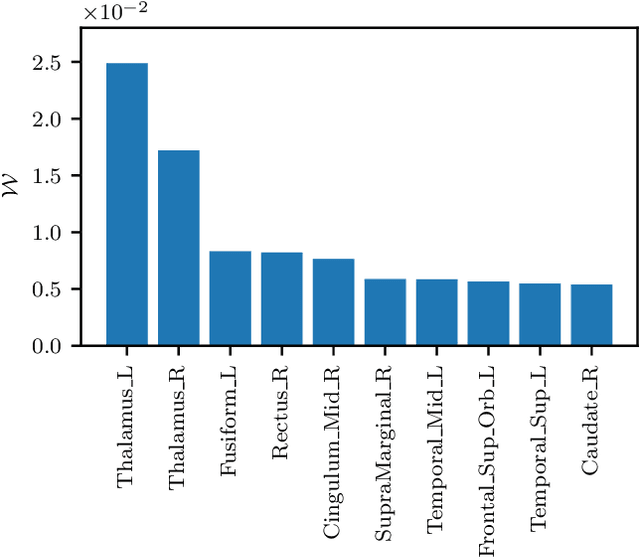
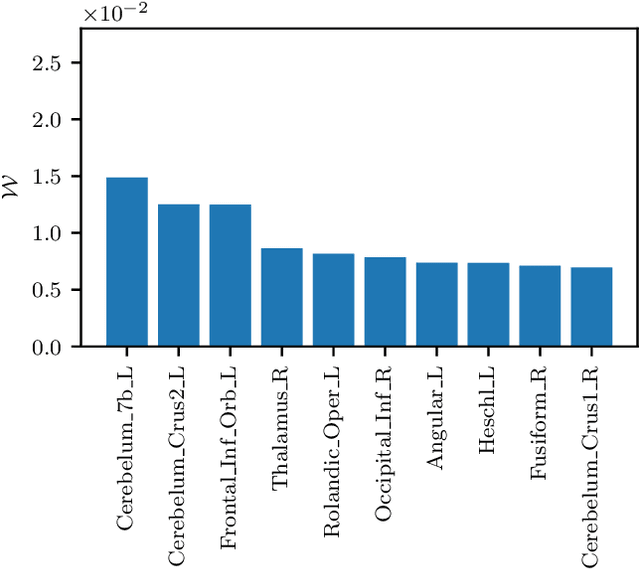
Abstract:Accurate diagnosis of psychiatric disorders plays a critical role in improving quality of life for patients and potentially supports the development of new treatments. Many studies have been conducted on machine learning techniques that seek brain imaging data for specific biomarkers of disorders. These studies have encountered the following dilemma: An end-to-end classification overfits to a small number of high-dimensional samples but unsupervised feature-extraction has the risk of extracting a signal of no interest. In addition, such studies often provided only diagnoses for patients without presenting the reasons for these diagnoses. This study proposed a deep neural generative model of resting-state functional magnetic resonance imaging (fMRI) data. The proposed model is conditioned by the assumption of the subject's state and estimates the posterior probability of the subject's state given the imaging data, using Bayes' rule. This study applied the proposed model to diagnose schizophrenia and bipolar disorders. Diagnosis accuracy was improved by a large margin over competitive approaches, namely a support vector machine, logistic regression, and multilayer perceptron with or without unsupervised feature-extractors in addition to a Gaussian mixture model. The proposed model visualizes brain regions largely related to the disorders, thus motivating further biological investigation.
A Novel Weight-Shared Multi-Stage Network Architecture of CNNs for Scale Invariance
Mar 08, 2017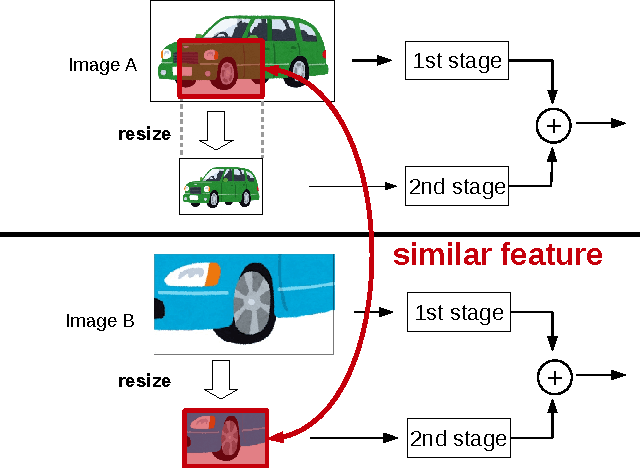
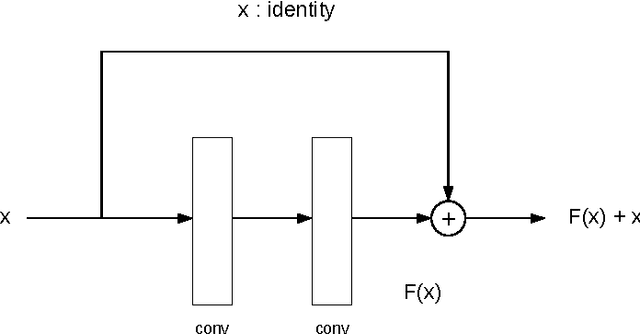

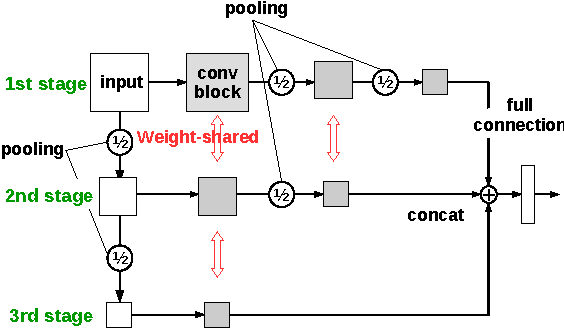
Abstract:Convolutional neural networks (CNNs) have demonstrated remarkable results in image classification tasks for benchmark and practical uses. The CNNs with deeper architectures have achieved higher performances recently thanks to their robustness to parallel shift of objects in images aw well as their numerous parameters and resulting high expression ability. However, the CNNs have a limited robustness to other geometric transformations such as scaling and rotation. This problem is considered to limit performance improvement of the deep CNNs but there is no established solution. This study focuses on scale transformation and proposes a novel network architecture called weight-shared multi-stage network (WSMS-Net), consisting of multiple stages of CNNs. The WSMS-Net is easily combined with existing deep CNNs, such as ResNet and DenseNet, and enables them to acquire a robustness to scaling of objects. The experimental results demonstrate that existing deep CNNs combined with the proposed WSMS-Net achieve higher accuracy for image classification tasks only with a little increase in the number of parameters.
 Add to Chrome
Add to Chrome Add to Firefox
Add to Firefox Add to Edge
Add to Edge